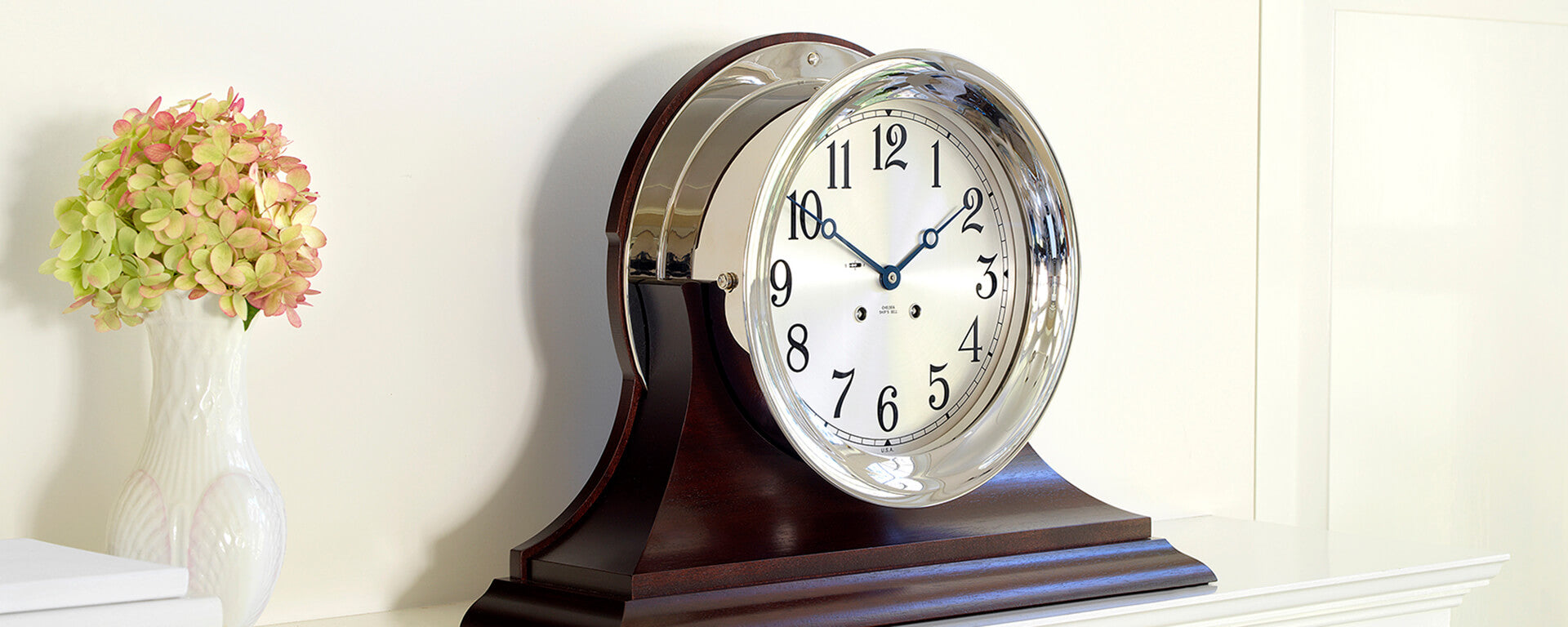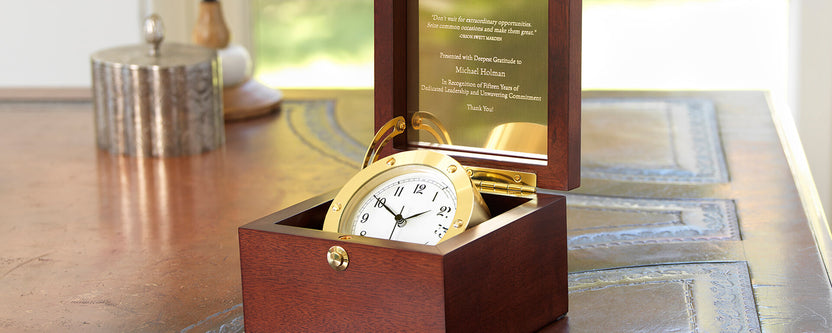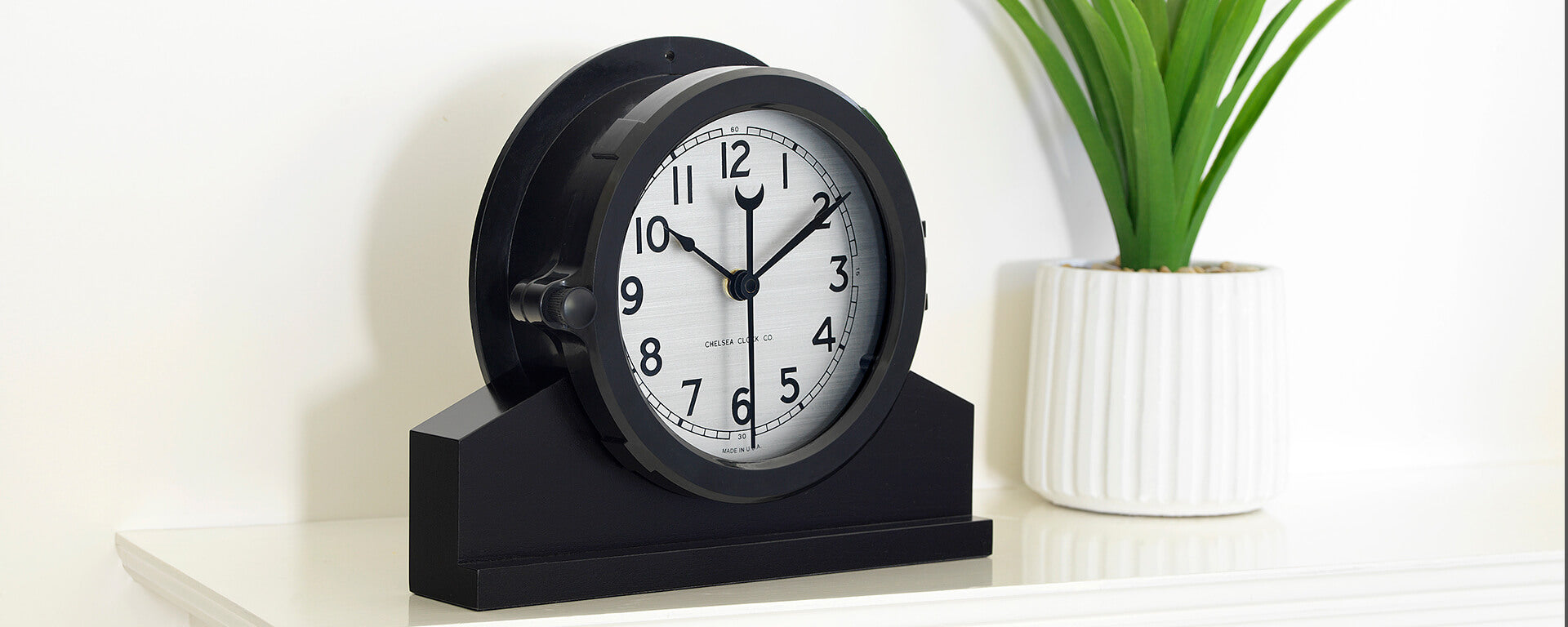"Nautical Elegance: The Maritime Heritage of Chelsea Clock's Ship's Bell Clocks"
Of all the timepieces produced by Chelsea Clock, the Ship's Bell remains the most significant. The design has remained unchanged since 1900 and has been found everywhere from U.S. Navy vessels to the Oval Office and Hollywood movies.
But why was this pillar of nautical clock elegance developed? By looking at the backdrop of Chelsea Clock's founding, it's easy to see how a clock like the Ship's Bell would come about. Join us as we explore the heritage of this famed chronometer.

Boston's Maritime History
To understand why Chelsea Clock's founders would be interested in a clock like the Ship's Bell, simply take a short drive from our headquarters. Chelsea Clock is roughly six miles from Boston Harbor and the Port of Boston. To this day, Boston is one of the major shipping hubs on the East Coast. In the 19th and early 20th centuries, the harbor played an even more significant role in day-to-day life.
Furthermore, Chelsea Clock is only three miles from the Boston Navy Yard (née Charleston Navy Yard). This was one of the first official U.S. Navy shipbuilding yards, being commissioned in 1801. During the 1880s and 1890s, the Navy was expanding its fleet, building warships with the latest steam-powered technology and steel-hulled construction. As such, the Boston Navy Yard, which was downgraded to a repair and storage center following the Civil War, experienced a revival. Between the harbor and the now-bustling shipyard, maritime culture was firmly engrained in Boston.
Early Marine Clockmaking
Given this background, it's no surprise that Joseph Henry Eastman - who founded the Boston Clock Company (1884-94) and had lived in Boston since at least 1867 - was fascinated by nautical clocks. The Boston Clock Co. produced several prototypes for what would become the Ship's Bell. The picture below is of one from 1893. An April 2002 article in Lighthouse Digest notes the successors to Boston Clock Company - Eastman Clock Company and then Boston Clock Company of Maine - also produced marine clocks.
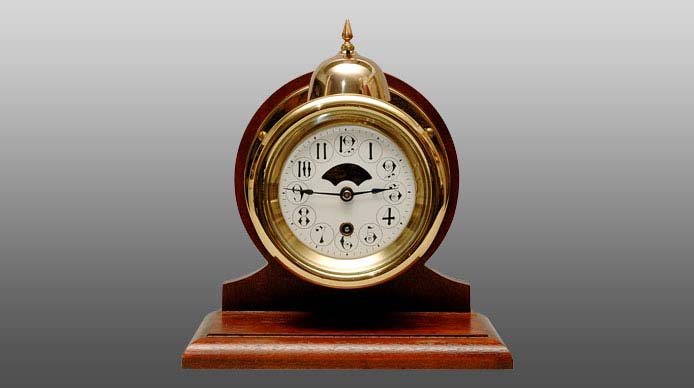
When Charles Pearson bought the company in 1897 and renamed it Chelsea Clock, interest in the Ship's Bell remained. The 4L movement with the mariner watch code chimes which would become the heart of the Ship's Bell was patented in 1898. The full clock design was perfected two years later.
Even then, Chelsea Clock had an emerging reputation for sophisticated yet durable clocks. The Ship's Bell cemented this with a design that included a forged brass case and hand-silvered dial. Furthermore, it was fully sealed against the elements to stand strong in the salty Boston air. This quality is what led to Chelsea Clock providing the U.S. Navy with clocks for the warships being built up the road.
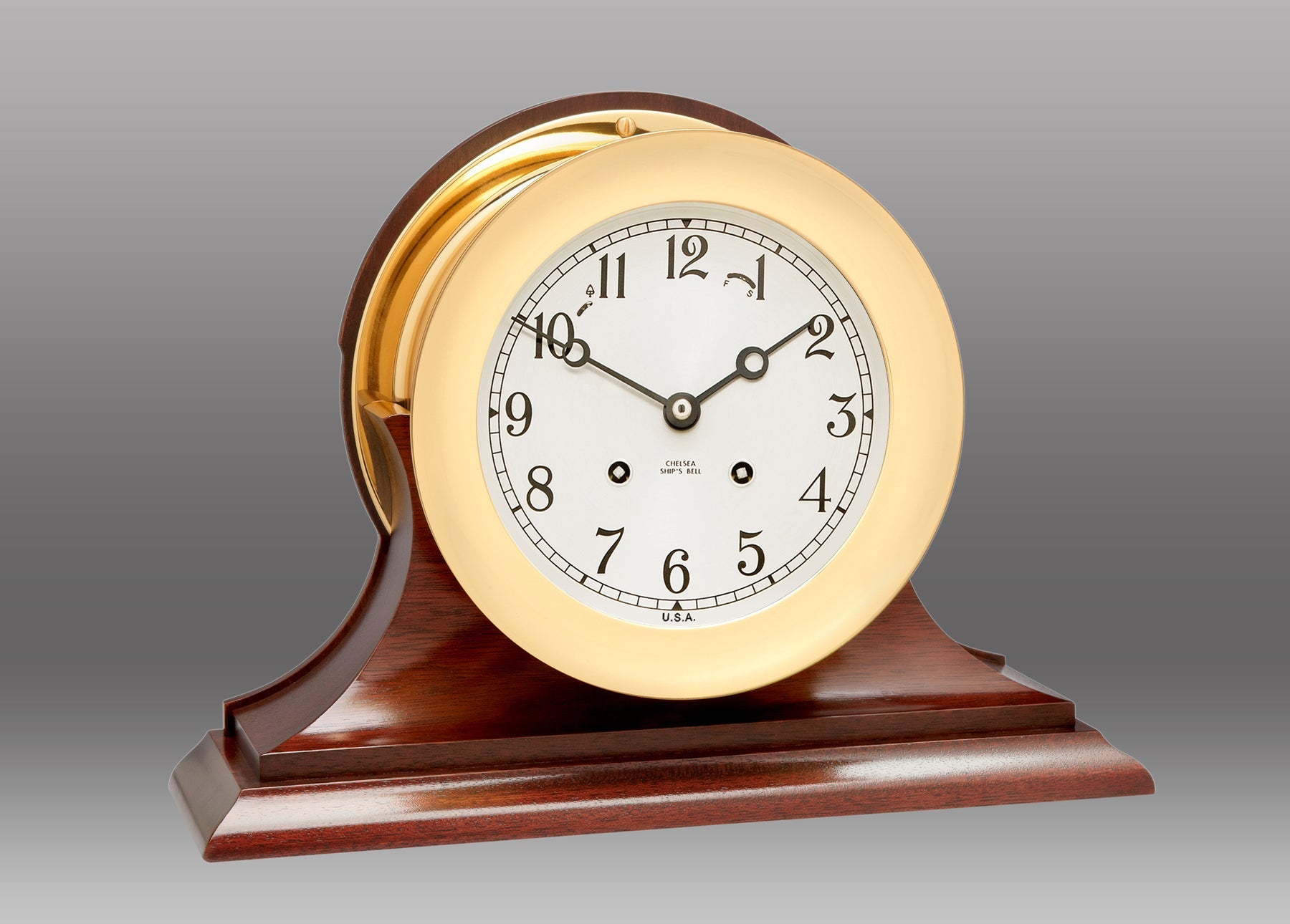
A Timeless Mariner's Clock
Today, you can purchase Ship's Bell clocks made the same way as they were in 1900. Each time you look at it, you'll be gazing upon a piece inspired by one of America's great maritime cities. We hope you experience the same sense of wonder as many others have.



